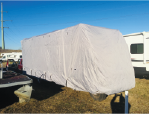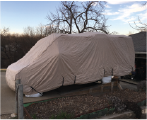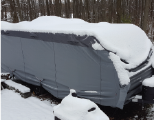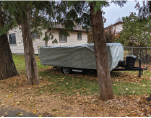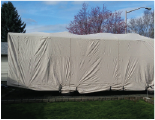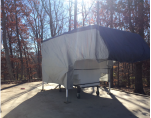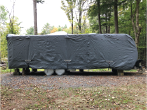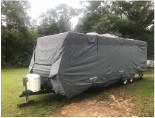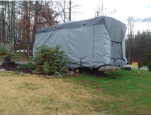If you’ve owned your RV for more than one season, you already know this: things wear out fast. The sun fades your roof, the rain seeps in where it shouldn’t, and before you know it, you’re Googling "RV roof replacement" and staring at a bill that feels more like a punishment than maintenance.
But it doesn’t have to be that way.
Taking care of your RV doesn’t mean you have to shell out thousands every year. In fact, small, consistent habits, done right, can stretch the life of your RV by years. The secret isn’t in expensive gadgets or dealership upsells. It’s in doing the basics well and knowing what to protect before it breaks.
Five Budget-Friendly Tips to Keep Your RV Road-Ready
1. Shield Your RV Roof With a Proper Cover
Ask any seasoned RV owner, and they’ll tell you: roof damage creeps in silently. One day, your rig looks great, the next, soft spots, bubbling, leaks. The truth is, UV rays, moisture, and debris do most of their damage while your RV is parked.
A dedicated RV roof coversolves that before it starts. Unlike bulky full-body covers, a roof-only tarp is quicker to install and focuses protection where it’s most needed, the top. Quality roof tarps are waterproof, tear-resistant, and built to fit over AC units, vents, and satellite domes without ripping or sagging.
Bonus? They help maintain a more consistent interior temperature, meaning less stress on your cooling system in storage.
And no, we're not talking about your average poly tarp from the hardware store. We're talking reinforced edges, UV-treated materials, mildew resistance, all in a cover that holds up through snowstorms and desert heat.
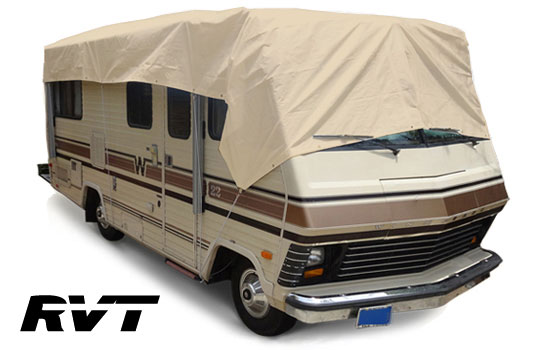
2. Don’t Skip Roof Checks — Even Off Season
You’d be surprised how much damage can happen when your RV’s not moving. Between seasons or during long storage periods, tiny cracks and leaks can develop from temperature changes and pressure around roof seams. If you’re not looking, you won’t know until water starts coming in.
Make it a habit to check your roof at least once a month, even if you’re not traveling. Focus on seams, around the AC, skylights, and any mounting points. If you notice wear, reseal it before the next rain.
This simple routine, paired with a durable RV cover, can prevent thousands in water damage.
3. Keep It Clean, Inside and Out
It sounds obvious, but there’s more to it than just wiping down counters. Dirt and debris on your RV’s exterior can trap moisture, accelerate corrosion, and wear down paint faster than you think. Inside, crumbs, humidity, and pests can turn your RV into a maintenance nightmare if left unchecked.
Quick tips:
- Wash your exterior every couple of months. Focus on the roof and around seals.
- Keep roof vents slightly cracked (if your model allows) to prevent trapped humidity.
- Use a moisture absorber during storage months.
- Vacuum and wipe down all interior surfaces regularly, especially near windows and slideouts.
Routine cleanliness isn’t just about appearance; it’s about reducing long-term wear.
4. Store It Right — Location Matters
Where you park your RV makes a big difference in how fast it ages. Leaving it in direct sunlight, under a pine tree, or near a windy shoreline accelerates damage to your seals, roof, and paint.
Here’s what to look for in a good storage location:
- Covered space or shade from buildings (not trees)
- Minimal exposure to strong crosswinds
- Good drainage around the parking spot
- Low humidity, if possible
And if you don’t have access to indoor storage? A weather-resistant RV rooftop cover makes all the difference. Look for models with reinforced corners, rope-reinforced edges, and mildew resistance. Some are even built to handle both summer heat and freezing winters, which helps if you’re parked long-term.
5. Use It — Don’t Just Let It Sit
Surprisingly, letting your RV sit unused for long periods can cause more harm than occasional use. Stationary rigs often develop dry rot in tires, stale fuel issues, stuck valves, and pest infestations. Moving your RV even once a month helps keep everything working as it should.
If you’re unable to drive it often, at least:
- Run the engine for a few minutes
- Exercise the generator
- Move it slightly to avoid tire flat spots
- Check battery charge levels
- Turn on appliances briefly to ensure they’re still functional
Using your RV isn’t just about vacations. It's maintenance in disguise. Combined with protection from the elements, especially from the top, it helps keep things functioning and reduces the risk of unexpected breakdowns.
One Simple Upgrade That Pays Off
Of all the tips here, one stands out for being low effort, high reward: covering your roof. It prevents the kind of damage you usually can’t see until it’s too late, UV cracks, moisture seepage, mold buildup, and fading. And it does all that while your RV is just sitting still.
The heavy-duty roof tarp built specifically for RVs is a solid investment for owners who want protection without the hassle of a full-body cover. These tarps are made to handle tough conditions, from desert sun to winter frost, and are designed to fit over common rooftop fixtures. Easy to tie down, built to last, and priced reasonably.
If you’ve got a travel trailer, fifth wheel, or motorhome parked right now, this kind of tarp could be the one thing saving your roof and your wallet in the months ahead.
Concluding Thought
Protecting your RV doesn’t have to be expensive. It just has to be smart. Routine checks, smart storage, and covering up what matters, especially the roof, go a long way in keeping your rig ready for the road.
Looking for a cover that actually works? Check out the RV Top Covers at National RV Covers, built for the real world, not just light rain.

.png)


